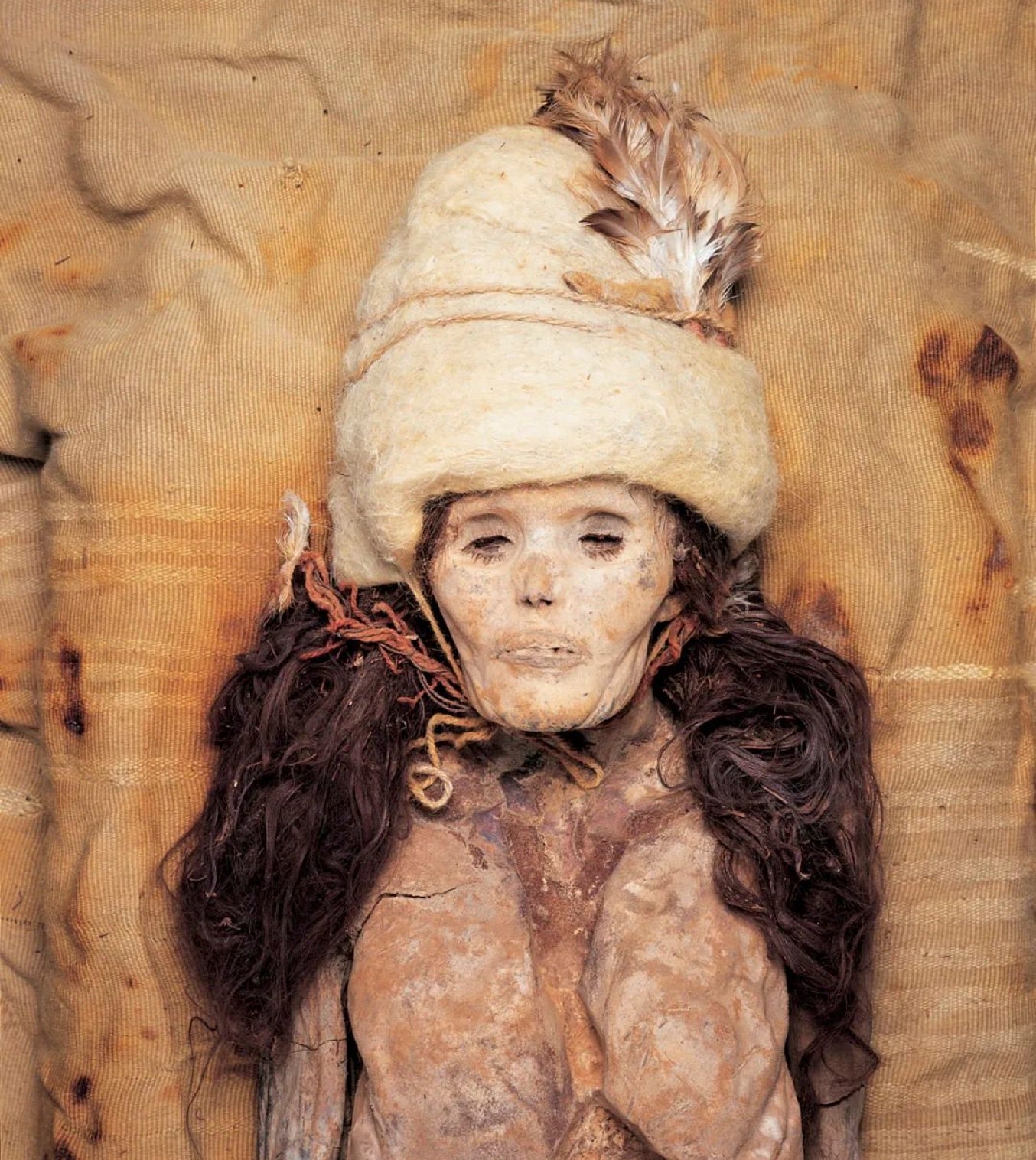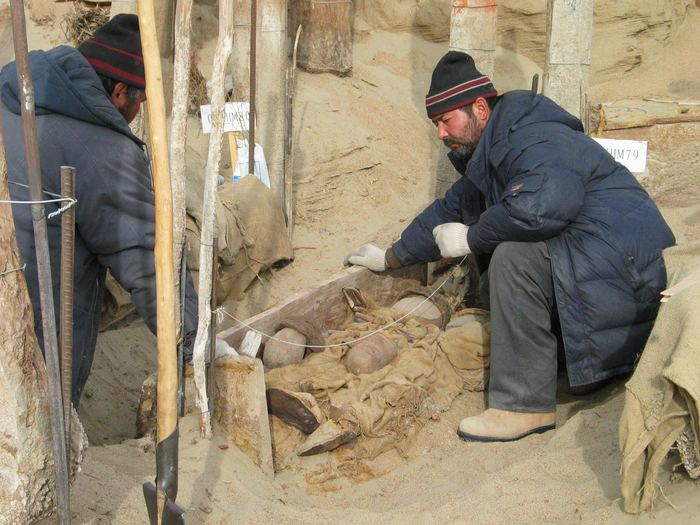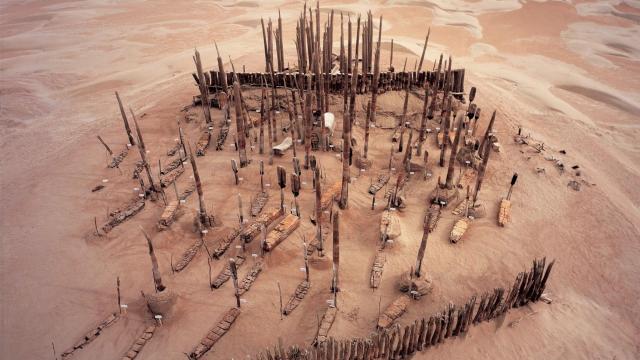Hundreds of naturally mummified human remains in the Tarim Basin, part of the Xinjiang Uyghur Autonomous Region, have long perplexed archaeologists. The remains, which date from 2,000 BCE to around 200 CE, are confounding for their remarkable state of preservation, luxurious clothing, and their burial in boat coffins among miles and miles of sand dunes, far from any sea.
The Tarim Basin mummies do not resemble modern inhabitants of the region, leading different groups of researchers to posit that they may have hailed from near the Black Sea, or been related to a group hailing from the Iranian Plateau.
Recently, an international team of researchers analysed the genomes of some of the earliest mummies from the Tarim Basin. They found that the people buried there did not migrate from the Black Sea steppes, Iran, or anywhere else — rather, the analysis suggests that they were direct descents of the Ancient North Eurasians (ANE), a human population widespread during the Pleistocene that is now mostly represented in genetic fragments in some populations’ genomes. The team’s research was published today in Nature.

“Archaeogeneticists have long searched for Holocene ANE populations in order to better understand the genetic history of Inner Eurasia. We have found one in the most unexpected place,” said Choongwon Jeong, a co-author of the study and a geneticist at Seoul National University, in a Max Planck Institute for Evolutionary Anthropology press release.
Being direct descendants of the Ancient North Eurasians, the people of the Tarim Basin didn’t mix with other populations in the vicinity. And there were plenty. The team compared the mummies’ genetics with those of a neighbouring group from the Dzungarian Basin, also called the Junggar Basin. Those 13 individuals descended from a combination of local populations and Western steppe herders linked to a different group, the Yamnaya.
Chao Ning, study author and an archaeologist at Peking University, said in the same release: “These findings add to our understanding of the eastward dispersal of Yamnaya ancestry and the scenarios under which admixture occurred when they first met the populations of Inner Asia.”
Looking at the mummies’ teeth revealed milk proteins, indicating that the population may have been pastoral dairy farmers. But they used millet from East Asia and medicinal plants from Central Asia, indicating that though there was not a mix of genes, there certainly was a sharing of goods across cultures.

“At present, we are unable to determine when precisely the Xiaohe groups acquired their distinctive cultural elements,” said Christina Warinner, co-author of the paper and an anthropologist at Harvard University and the Max Planck Institute for Evolutionary Anthropology. “It appears that they had already learned to farm, herd, and dairy before moving into the Tarim Basin, because we found that the founding population was already consuming dairy products. It is unknown where they lived before moving into the Tarim Basin, but their genetic profile and those of their admixed neighbours suggests that they were local to the general region.”
Though the Tarim Basin individuals were not genetically diverse, they were “culturally cosmopolitan,” Warinner said in an email to Gizmodo. They had fantastically woven clothing, beads and other decorative wares, and a diversity of foodstuffs.
“Our findings about the Tarim mummies have raised numerous questions about the nature of Bronze Age population contact, trade, and interaction,” Warinner said. “We don’t have the answers yet, but we hope that continued archaeological research on the Xiaohe archaeological culture will begin to shed light on these topics.”
Some of the individuals look as if they died recently, with hair still on their heads, dyed clothing, and cashmere hats. And yet, it’s their genetic codes, invisible to the eye, that are revealing so much more about who these people were.
